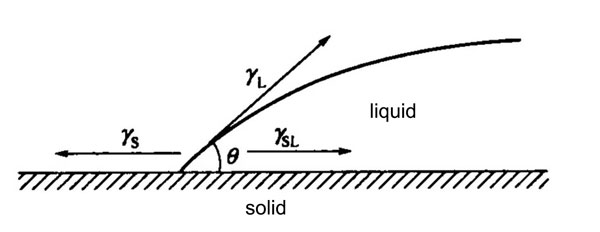In order for the adhesive to adhere to the rubber feet, it is also necessary to spread between them and eventually establish a chemical cross-linking in order to obtain a true bond. But so far there is no unified consensus on this aspect. There are a total of five different theories or opinions on the bonding mechanism of rubber.
(1) Mechanical adhesion theory
From a microscopic point of view, the surface of the adherend is very rough, and the surface is covered with grooves and tiny holes. When the adhesive penetrates and solidifies, many hooks are formed, which can be integrated with the adherend to form a mechanical force to support the bonding. This theory has its limitations, because some rubber feets can stick even if they are non-porous, which is difficult to justify.
(2) Adsorption theory
The atoms and molecules on the surface of the adherend interact with each other. These forces can be divided into strong forces (ie, main valence and chemical bonds) and weak forces (secondary forces or van der Waals forces). The former forms ionic bonds and covalent bonds. The latter forms a physical adsorption through the action of van der Waals forces, forming adhesion, and this interpretation becomes the core of the adsorption theory. However, according to the adsorption theory, non-polar polymers (including rubber) are unlikely to have high bond strength, which is not the case.
(3) Diffusion theory
The view is that light contact between the adhesive and the adherend is insufficient to support the bond, and it must be diffused. For the two substances to achieve the desired diffusion effect, their solubility parameters are close, and the difference in surface tension is small to promote surface mutual solubility. Some of these polymers do not have these conditions, but through the movement of the segments, they still achieve mutual diffusion, which cannot be explained by this theory. Moreover, this theory does not explain the bond between rubber adhesives and inorganic materials such as metals.
(5) Electrostatic theory
It is believed that there is an electric double layer between the adhesive and the rubber feet. When two rubbers or rubber/metals are in contact, an electric double layer is formed, thereby generating a potential difference, and forming a bond by surface chemical modification or graft reaction. However, this theory does not explain the effect of temperature and humidity on adhesion, and also eliminates the possibility of bonding between non-polar substances (including non-polar rubber), which is not the case.

(6) Chemical bond bonding theory
It is considered that the bonding of the bonding interface belongs to the category of chemical bonding, and the bonding effect is higher than that of the intermolecular force, and the rubber/brass bonding is a typical example. The sulfur atom in the compound reacts with the brass to form cuprous sulfide. This theory can also convincingly explain the mechanism by which rubber/metal can be bonded by isocyanate.
In summary, there are currently five or six theories used to explain the mechanism of rubber bonding, but unfortunately there are limitations. A complete and comprehensive system has yet to be established.